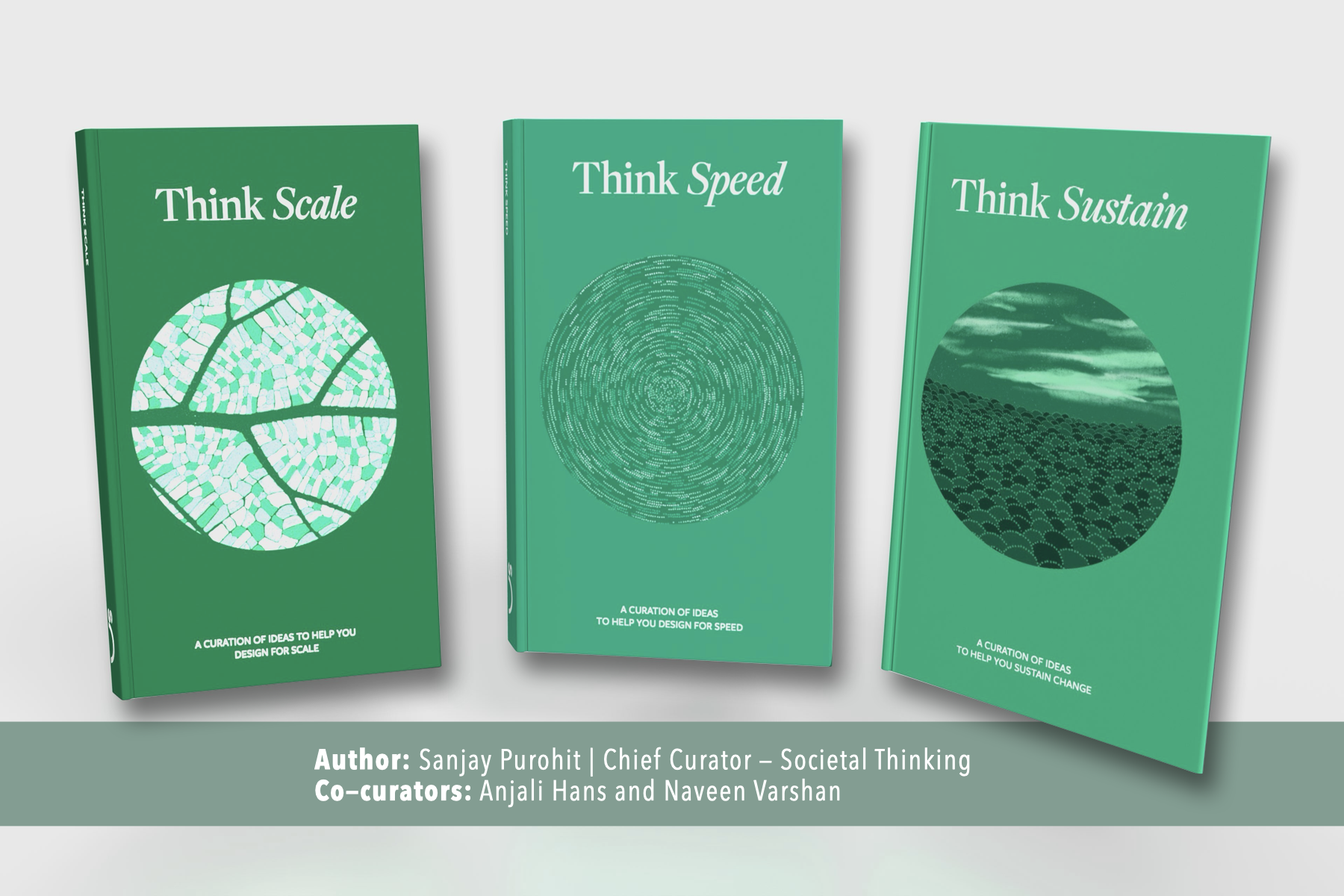Every morning, as I walk my 10-year-old daughter to her school bus, we have our little conversations; sometimes about her homework, sometimes about the latest playground drama, and sometimes about the big problems of the world. One day, as we stood waiting, watching her bus inch forward through the traffic, she sighed and said, “Acchha, why don’t they just build a road straight from our house to my school? Then I’d never be late!” I chuckled and asked, “How many such roads do you think we’d need for every child, every school, every workplace?” She thought for a moment and shrugged. “Yes, that’s a lot!”. “But if we can’t build so many roads, why allow so many vehicles,”she asked. I smiled. “That’s a great question, traffic is a whole other problem altogether.”
Some problems seem straightforward; until you start pulling at the threads. Urban mobility, climate action, and energy transition are all tangled knots of interdependencies, shaping and reshaping each other in ways we can’t always predict. Traffic isn’t just about roads; it’s also about pollution, public health, economic opportunity, and urban design. Climate action isn’t just about reducing emissions; it’s also about industry, consumer behaviour, government policy, and technology moving in sync and many more. The energy transition isn’t just about renewables; it’s also about grid resilience, distributed generation, and economic incentives. These aren’t linear problems with single solutions. They are living, evolving systems. Yet, too often, we apply rigid, curated solutions as if we’re pruning a garden, when in reality, we’re navigating a forest.
What if we stopped trying to impose artificial order on these organic, interconnected systems?
For too long, we’ve relied on lone heroes – visionaries, policymakers, corporations – to single-handedly solve large issues. But complex problems don’t have singular solutions; they need ecosystems.
Infrastructure Thinking Over Point-to-Point Solutions
History is full of such examples. The internet began as ARPANET, a military project, but by embracing openness, it led to web browsers, Web3, and today’s AI revolution. 19th-century railroads started as fragmented private investments but later connected into a national network, transforming entire industries. Telecommunications evolved from isolated systems into shared infrastructure, paving the way for mobile networks and broadband connectivity. These weren’t just solutions to problems; they were infrastructural shifts that unlocked possibilities we hadn’t even imagined yet.
The internet wasn’t designed as a solution for digital commerce, media, or AI, yet by being open and decentralised, it enabled all of them to emerge and scale.
The question then is no longer, How do we solve this problem? But rather, how do we build an infrastructure where solutions emerge naturally?
This is the thinking that led to Beckn. Recognising that no single company, policymaker, or platform could fix mobility, commerce, or energy alone, we focused on building ecosystems, where collaboration replaces competition, where solutions are not imposed but enabled.
Much like nature itself, our inspiration came from forests, not walled gardens. In a forest, species grow together, sustaining one another without external control. In contrast, a walled garden depends on a gardener—trimming, pruning, and maintaining it to fit a controlled vision. One thrives through self-organisation, the other depends on external intervention.
Consider Beckn Protocol as the next leap in this evolution. Just as HTTP standardised web communication and SMTP revolutionised email, Beckn creates the foundation for digital ecosystems that are open, equitable, and scalable. It integrates fragmented silos into unified networks, empowering participants to connect, transact, and innovate without friction. Much like the internet, telecommunications, or shared digital payments, Beckn is about enabling unforeseen solutions – what we call “happy accidents.”
By creating an open playground rather than a walled garden, Beckn allows multiple innovations to emerge, rather than forcing a single, optimised, and over-curated approach.
What Are Open Networks and Protocols?
Open networks facilitate free flow of information, goods, services – key in allowing diverse stakeholders to trust and align, taking what is scarce is making it abundant and opening up a space for collaborative solving. They are decentralised systems built on open protocols—shared rules and standards that enable different entities to work together without intermediaries. This reduces the friction of coordinating resources, actors and systems.
Think about climate change. It is not just a technological problem – it is a coordination problem. The world already has the technology to combat climate change: renewable energy, electric vehicles, carbon markets, and sustainable agriculture. Yet, despite these advancements, scientists warn that we are still on a perilous path toward 2+ degrees of warming. The problem? Fragmented data, siloed stakeholders, and inefficient resource allocation continue to stifle progress.
The numbers tell the story. $4.5 trillion per year – that’s the funding required by the early 2030s to stay on track with global climate goals (IEA Report). Climate action remains disorganised and inefficient, struggling with dispersed stakeholders, disaggregated resources, and lack of global-scale coordination.
A fragmented approach to climate action is too slow and too costly. But coordinated action can create exponential change, making local solutions globally scalable. Open networks can reduce information asymmetry, ensure trust, and minimise transaction frictions, unlocking the true potential of collective climate action.
This is already taking shape. The Open Climate Data Grid aims to serve as an interoperable data infrastructure, tracking climate risks, emissions, and environmental impact in real time. Decentralised climate financing can democratize access to green bonds and carbon credits, reducing inefficiencies in climate funding. Interoperable carbon markets can integrate seamlessly with regulatory infrastructure, ensuring accountability and trust. Beyond industrial decarbonisation, open networks are enabling nature-based solutions, like reforestation, regenerative agriculture, and biodiversity conservation, by creating sustainability-driven marketplaces. Additionally, Beckn is working on providing the trusted infrastructure to unlock interoperability across the energy ecosystem. The Digital Energy Grid (DEG), co-developed with the International Energy Agency, has already facilitated 4.3 million transactions and dispersed over 22 GWh of energy. It lowers costs, expands market access, and delivers measurable returns by aligning three critical flows: energy, trusted information, and capital. As with digital ID and payments in India, its power lies in making coordination infrastructure open and programmable, allowing anyone to build on top of it under neutral, multi-stakeholder governance that keeps markets open and competitive.
Through these advancements, open networks aren’t just supporting climate action; they are redefining how global ecosystems collaborate, adapt, and scale solutions in response to climate urgency.
This is the shift from solutions to infrastructure – from my app to our shared foundation.
A New Way of Doing New Things
As we stand at the crossroads of climate change, urbanisation, energy transition, and economic inclusivity, we must ask ourselves:
Are we willing to let go of our urge to create the perfect solution and instead nurture the conditions for an open, evolving ecosystem? Can we step back from the lone-hero mindset and allow networks, like nature itself, to find the way?
In the pursuit of solving the world’s greatest problems, perhaps the real challenge is not in finding the answer, but in letting the answer be co-created. After all, we don’t just need better solutions, we need better ways to orchestrate them.
 Back
Back


